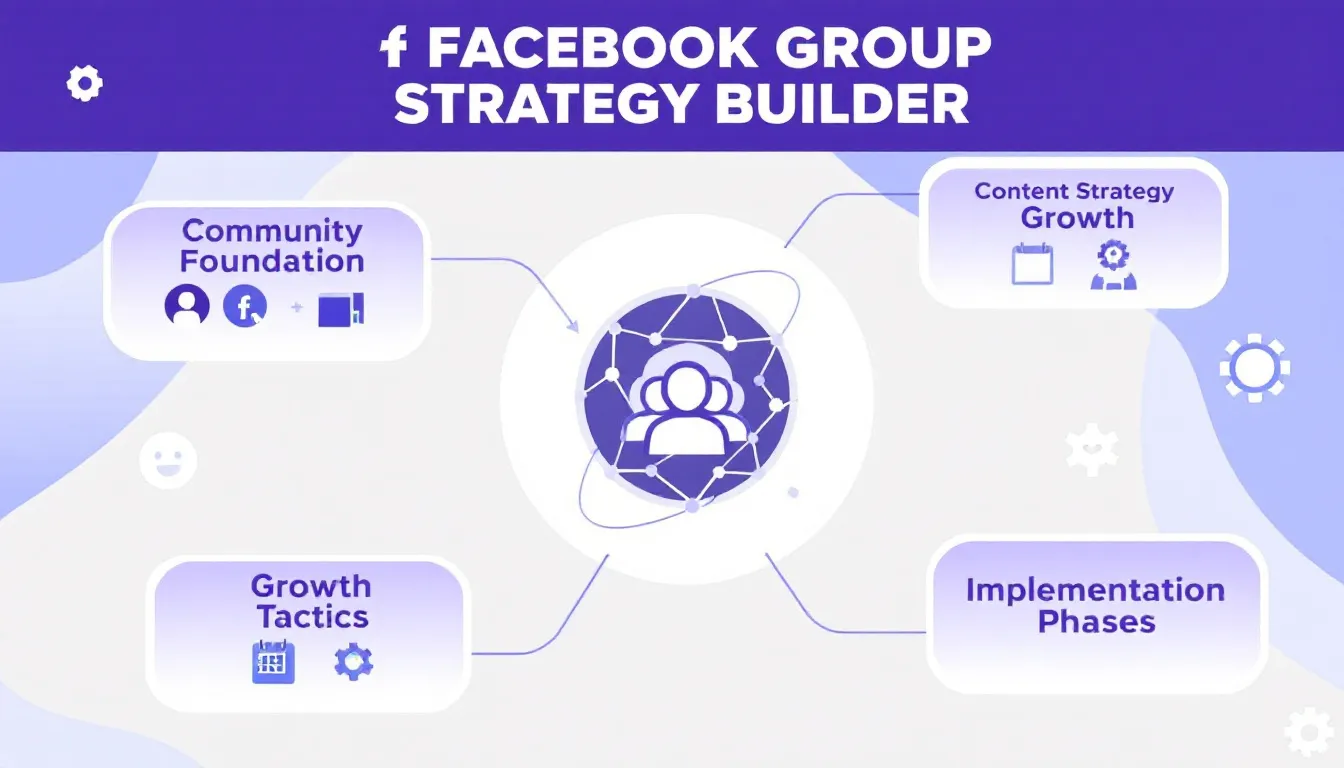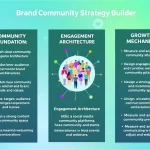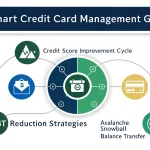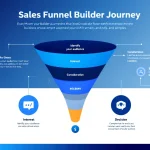Is this tool helpful?
How to Use the Facebook Group Strategy Builder Effectively
To create a detailed Facebook Group strategy using this tool, follow these steps carefully. Each field helps you define important aspects of your community so you get a tailored strategy designed to engage your members and grow your group.
- Business Name Field: Enter the name of your organization or group. For example, use “Creative Writers Hub” or “Healthy Living Support”.
- Target Audience Description: Describe your ideal members with clear traits including age, interests, and habits. Example inputs: “Aspiring authors aged 20-35 passionate about fiction writing” or “Adults interested in holistic wellness and nutrition”.
- Shared Interest: Specify the common theme or topic that connects your members. Examples include “fiction writing techniques” or “plant-based cooking and lifestyle.”
- Group Goals (Optional): State what you want your group to achieve. For instance, “Foster peer feedback on writing projects” or “Support members in adopting healthy eating habits.”
- Content Topics (Optional): List the main subjects you plan to cover. Examples: “weekly writing prompts, member spotlights” or “nutritional advice, recipe sharing, wellness challenges.”
Engaging Introduction: What the Facebook Group Strategy Builder Does and Why It Helps You
The Facebook Group Strategy Builder helps you design a clear and actionable plan for creating and managing Facebook Groups centered on shared interests. It guides you through key community-building elements — from understanding your audience to planning content and engagement tactics.
By using this tool, you get a personalized strategy that saves time and effort in planning your Facebook Group. It promotes focused growth, encourages meaningful member participation, and provides a solid foundation for your community management.
Key Benefits You’ll Gain
- Clear Structure: Break down your group’s purpose, audience, and content in an organized way.
- Customized Guidance: Receive suggestions tailored to your business goals and target members.
- Time Savings: Get a detailed strategy without spending days researching and planning.
- Expert Insights: Benefit from community management best practices built into the plan.
Practical Usage of the Facebook Group Strategy Builder
This tool operates by processing the information you provide about your business, audience, and interests, then generates a customized Facebook Group strategy that covers essential areas of group management.
What You Receive From the Tool
- Community Profile: A description of your target audience, including key demographics and interests.
- Content Plan Outline: Suggested topics and formats to keep your group active and engaged.
- Engagement Tactics: Ideas to encourage member interaction through calls to action, challenges, and discussions.
- Growth Strategy: Milestones and methods for attracting new members and keeping them involved.
- Guidelines Framework: Principles to help you establish rules and a positive group culture.
Example Use Case 1: Local Art Community
- Business Name: “City Arts Collective”
- Target Audience: Local artists and crafters aged 18-50 looking to share work and collaborate
- Shared Interest: Visual arts, DIY crafts, and gallery events
- Goals: Build a community of 1,000 active members in six months
- Content Topics: Workshop announcements, artist spotlights, weekend challenges
Example Use Case 2: Small Business Networking Group
- Business Name: “Entrepreneur Connect”
- Target Audience: Small business owners and freelancers seeking advice and partnerships
- Shared Interest: Business growth strategies and networking opportunities
- Goals: Support collaboration and shared learning among 2,000 members
- Content Topics: Market trends, webinar schedules, member success stories
Core Components of the Facebook Group Strategy
1. Building Your Community Foundation
- Craft a compelling group description that clearly states purpose and value.
- Set up group rules and guidelines to maintain a respectful environment.
- Define moderator roles to ensure smooth group management.
- Create a welcome message to greet new members warmly.
2. Designing a Dynamic Content Strategy
- Plan weekly themes to keep discussions focused and fresh.
- Distribute content categories evenly to appeal to different audience interests.
- Use engagement post templates to encourage member interaction.
- Encourage user-generated content that builds trust and community spirit.
3. Implementing Growth and Engagement Tactics
- Apply member acquisition strategies such as invitation campaigns and partnerships.
- Optimize engagement with timely responses and interactive activities.
- Set community milestones to celebrate progress and motivate members.
- Explore cross-promotion opportunities with similar groups or related brands.
Frequently Asked Questions About Facebook Group Strategy Building
How often should I post in my Facebook Group?
Start with 3 to 5 quality posts per week. Adjust frequency based on member engagement and community size to keep conversations lively without overwhelming members.
What content works best for Facebook Groups?
Discussion prompts, polls, member highlights, expert tips, and celebrations drive high participation. Mix content types to maintain interest and interaction.
How can I boost member participation?
Host weekly challenges, spotlight active members, and create themed discussion days to encourage regular contributions and foster community bonds.
Should I have multiple moderators?
Yes. For every 1,000 members, having 2 to 3 moderators helps enforce rules, manage conflicts, and maintain group culture consistently.
How do I measure the success of my Facebook Group?
Track metrics like member growth rate, post engagement, participation frequency, and gather direct feedback with polls or surveys to gauge satisfaction.
What’s the best way to manage conflicts in the group?
Set clear guidelines early and address issues quickly and professionally through private messages to maintain a positive environment.
Can I monetize my Facebook Group?
Yes. Once your community is active and engaged, explore monetization avenues such as paid memberships, sponsored content, or selling related products and services.
Best Practices for Implementing Your Facebook Group Strategy
1. Launch Phase
- Begin with a soft launch to invite core members who resonate with your vision.
- Prepare a content calendar outlining key posting dates and topics.
- Plan engagement activities that encourage early interaction.
- Create a welcome sequence with messages that introduce group values and rules.
2. Growth Phase
- Run member acquisition campaigns through social channels and partnerships.
- Optimize engagement by responding promptly and encouraging member-led posts.
- Diversify your content mix to appeal to a broader audience.
- Collect feedback regularly to improve community experience.
3. Sustainability Phase
- Develop a community ambassador program to empower active members.
- Use advanced engagement techniques such as live events or exclusive content.
- Continuously optimize content based on analytics and member interests.
- Enhance the group’s value proposition to maintain long-term retention.
Important Disclaimer
The calculations, results, and content provided by our tools are not guaranteed to be accurate, complete, or reliable. Users are responsible for verifying and interpreting the results. Our content and tools may contain errors, biases, or inconsistencies. Do not enter personal data, sensitive information, or personally identifiable information in our web forms or tools. Such data entry violates our terms of service and may result in unauthorized disclosure to third parties. We reserve the right to save inputs and outputs from our tools for the purposes of error debugging, bias identification, and performance improvement. External companies providing AI models used in our tools may also save and process data in accordance with their own policies. By using our tools, you consent to this data collection and processing. We reserve the right to limit the usage of our tools based on current usability factors.







